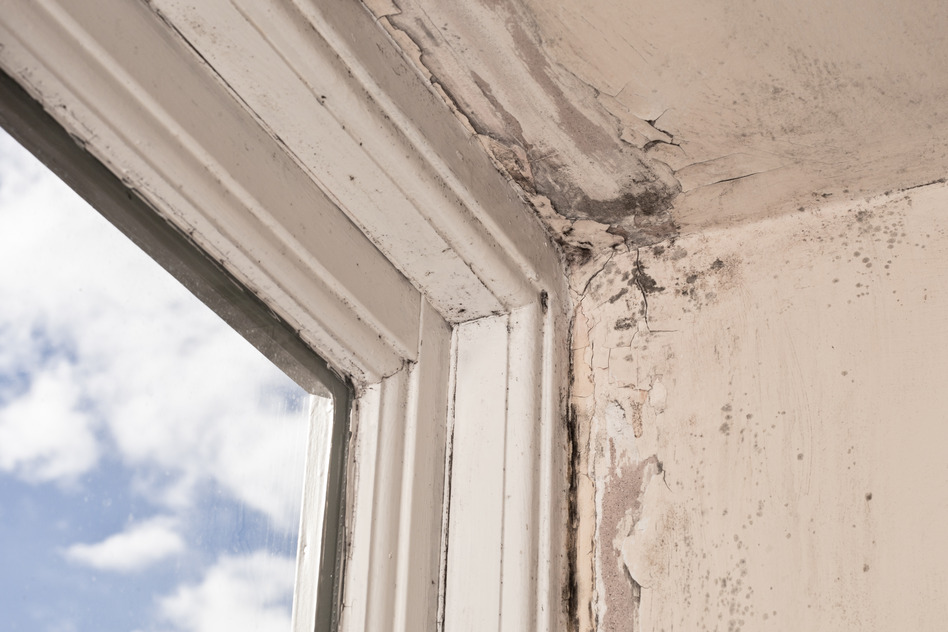If water gets into cracks and under painted surfaces and doesn’t dry out, it can cause wood rot. Once wood rot takes hold, your only options are big-buck repairs and replacement of the rotted parts.
Left untreated, wood rot may spread, infecting other wood parts and possibly leading to structural damage.
That’s not all: The dampness that causes wood rot invites voracious termites. Bottom line: Because your house is made with a lot of wood — framing members, plywood sheathing, trim — there’s a lot to protect.
Look for Trouble Spots
The best defense against rot? Your eyes — once each year, make a tour of your house to inspect for:
- Cracks and holes in the caulking around windows, doors, dryer vents, etc.
Remedy: Re-caulk any openings using a high-quality acrylic latex exterior caulk.
- Stains under eaves, around fireplaces, and on interior ceilings.
Remedy: You may have a roof leak. Inspect for damage yourself or hire a specialized roofing inspector ($175) through the National Roof Certification and Inspection Association. Roof repairs may cost as little as $10 to patch a minor leak, or $1,000 to fix a leaky roof valley.
- Sagging and leaking gutters and downspouts.
Remedy: Most gutter repairs and replacements are easy DIY jobs. That said, you’ll want to be cautious about working near the top of a multi-story house. Pro gutter repairs are $100 to $900, depending on the extent of the damage.
- Shrubbery and tree branches closer than 2 feet from siding and roofing.
Remedy: Trim back shrubbery; it should be 3 feet away from siding. Tree branches can rub against roofs during windy days, damaging the roofing. Trim tree branches at least 3 feet away from roofing.
- Peeling and cracked painted surfaces.
Remedy: Scrape and sand peeling paint. Apply primer to ensure good adhesion. Paint the damaged area with color-matched exterior paint.
- Crawl space vents blocked with leaves and other debris.
Remedy: Remove blockage; use a shop vac to thoroughly clean vent screens.
- Dirt, leaves, and twigs between decking boards.
Remedy: Use a screwdriver or awl to pry out gunk that may trap moisture and lead to rot. Flush out any remaining debris using a garden hose.
Probe for Rot
As you inspect your house, you should actively look for wood rot. It’s not always obvious; wood rot may occur below the outer surface of wood and underneath intact layers of paint.
If you suspect rot, use your fingers to press on wood surfaces and see if they feel soft or crumble easily. Use an awl to probe wood framing members. Typical trouble spots include:
- Where two pieces of trim meet.
- Siding butt joints, and where siding meets trim.
- Horizontal surfaces, such as window sills, door thresholds, and railings.
- Deck support posts.
- Exterior stair stringers that support steps.
- Fascia behind leaking gutters.
Tips for Preventing Wood Rot
- Always use decay-resistant or pressure-treated lumber for decks. Wood that touches the ground should be pressure-treated lumber that’s rated for ground contact.
- When building an exterior project with wood, stain or paint all sides of each lumber piece before assembly.
- Don’t lean anything against your siding, such as old plywood, tools, and ladders.
- Clean your gutters regularly to prevent clogs that could cause water to back up and spill onto fascia and siding.
Other Ways to Protect Your House
Home inspections are a good defense against a multitude of problems. Here are other essential inspections you can easily do yourself:
- Checking Your Plumbing Pipes
- How to Inspect Your HVAC
- How to Make Sure Your Fireplace is Safe






